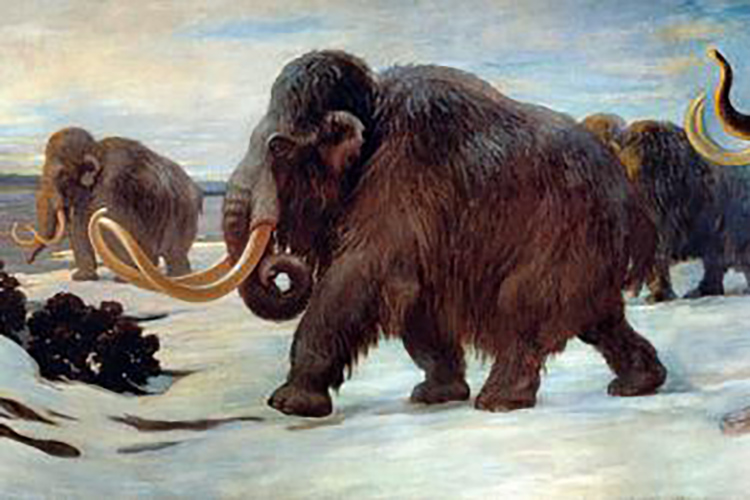Woolly mammoths experienced a genomic meltdown just before extinction
The study warns that preserving a small group of isolated animals is not sufficient to stop the negative effects of inbreeding

March 2, 2017
As the population of woolly mammoths dwindled, the massive animals’ genomes experienced a mutational meltdown, pushing them closer to extinction, according to a study published today by researchers at UC Berkeley.
The study compared genetic material from a woolly mammoth that lived when the species was plentiful to genetic material from a woolly mammoth that lived as the species neared extinction. The comparison gave researchers the rare opportunity to see what happens to the genome as a population declines, and supported existing theories of genome deterioration stemming from small population sizes. The study also offers a warning to conservationists that preserving a small group of isolated animals is not sufficient to stop negative effects of inbreeding and genomic meltdown.

Woolly mammoths near the Somme River (Illustration by Charles R. Knight)
“There is a long history of theoretical work about how genomes might change in small populations. Here we got a rare chance to look at snapshots of genomes ‘before’ and ‘after’ a population decline in a single species,” said Rebekah Rogers, who led the work as a postdoctoral scholar at Berkeley and is now an assistant professor at the University of North Carolina at Charlotte. “The results we found were consistent with this theory that had been discussed for decades.”
The study was published today in the journal PLOS Genetics. Rogers conducted the study in collaboration with Monty Slatkin, a Berkeley professor of integrative biology.
Woolly mammoths were one of the most common large herbivores in North America, Siberia and Beringia, the now-underwater land bridge between the two, until a warming climate and human hunters led to their extinction on the mainland about 10,000 years ago. Small island populations persisted until about 3,700 years ago before the species finally disappeared.
To test the theory that woolly mammoths’ genomes changed as their population declined, researchers compared existing genomes from a mainland mammoth that dates back to 45,000 years ago, when the animal was plentiful, to one that lived about 4,300 years ago. The recent genome came from a mammoth that had lived in a group of about 300 animals on Wrangel Island in the Arctic Ocean.
“We found an excess of what looked like bad mutations in the mammoth from Wrangel Island,” Rogers said.
The analysis showed that the island mammoth had accumulated multiple harmful mutations in its genome, which interfered with gene functions. The animals had lost many olfactory receptors, which detect odors, as well as urinary proteins, which can impact social status and mate choice. The genome also revealed that the island mammoth had specific mutations that likely created an unusual translucent satin coat.
Rogers said mathematical models developed by Slatkin of how genomes change as population conditions change were key to analyzing the genomes.
“With only two specimens to look at, these mathematical models were important to show that the differences between the two mammoths are too extreme to be explained by other factors,” Rogers said.